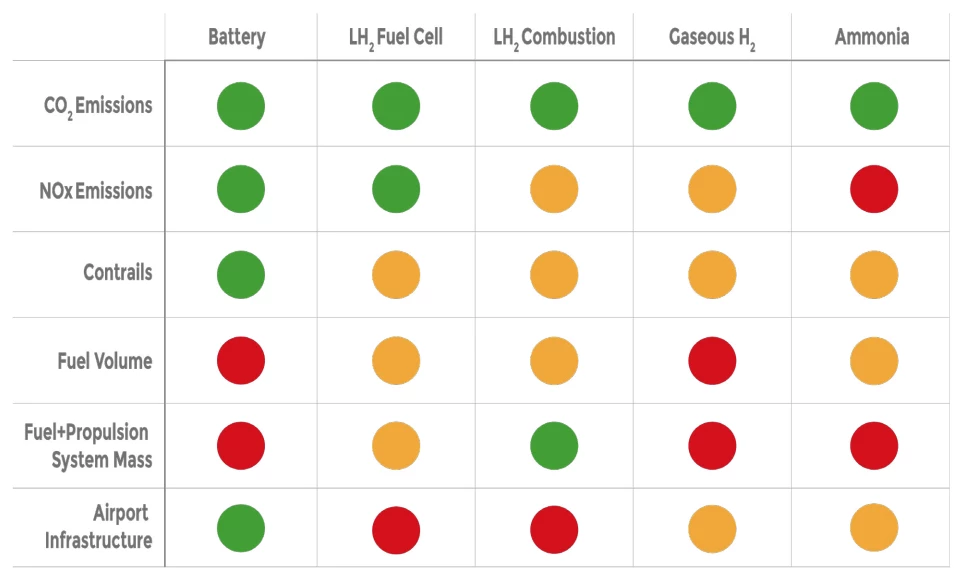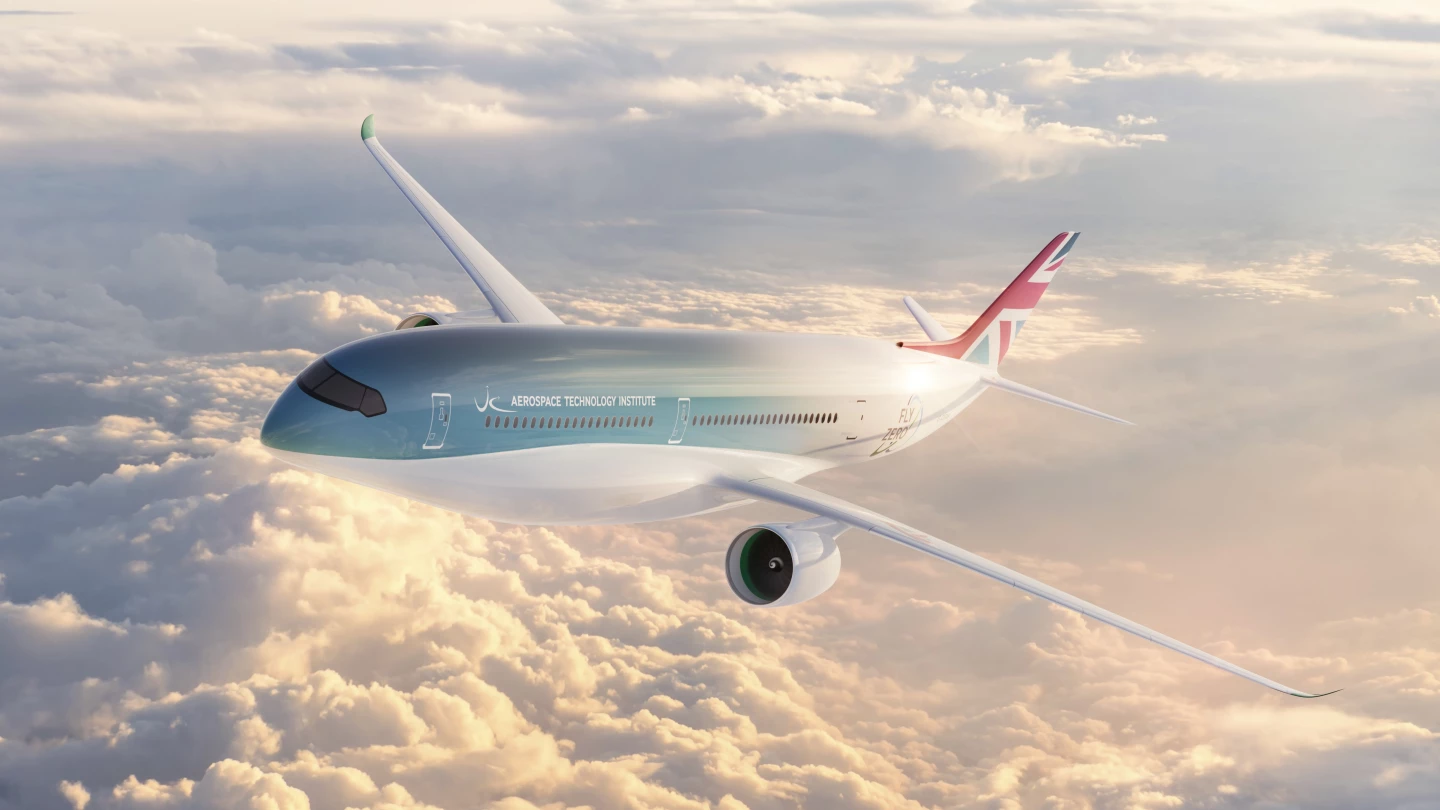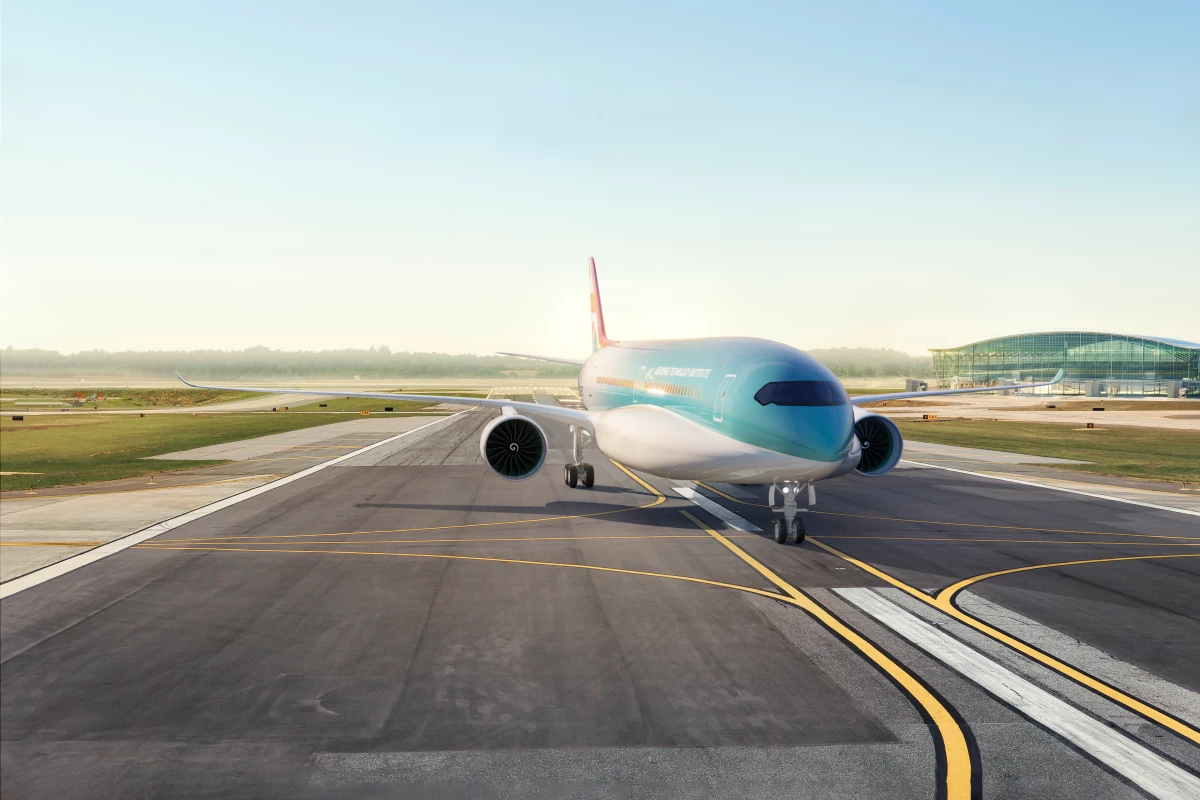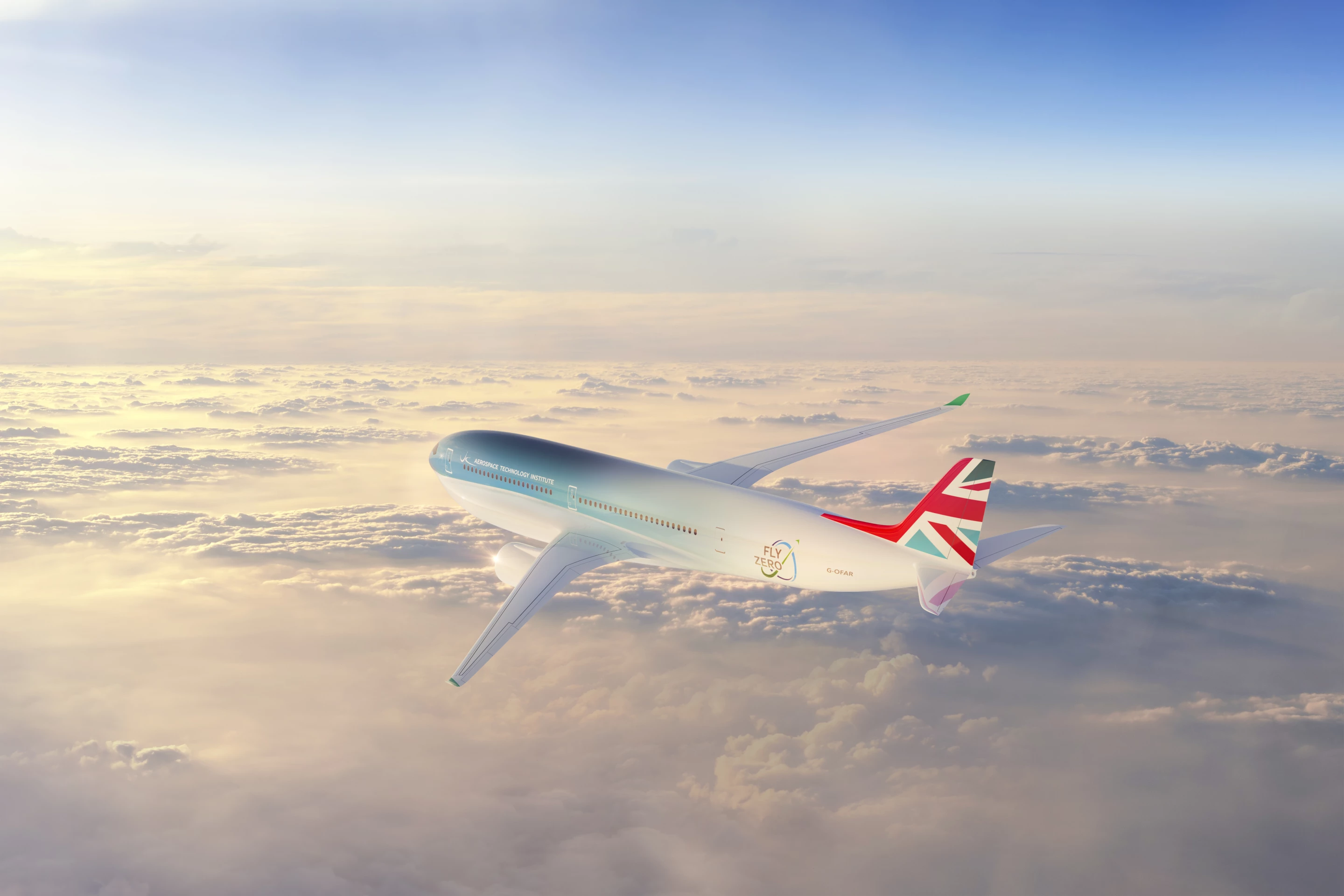Long-haul aviation presents a tough challenge for decarbonization, but a group of 100 aerospace experts working on the UK government's FlyZero project says 279-seat liquid hydrogen airliners will connect any two points on the globe with just one stop.
The FlyZero team, led by the UK's Aerospace Technology Institute but featuring talent seconded from a range of aviation companies, was put together to to examine all promising paths to zero-carbon intercontinental aviation, and propose solutions that can be put into service by the end of the decade. With experts from across the aviation and clean fuels spectrum, the approach is holistic, and covers technology, design, manufacturing, operational and marketing elements of possible solutions.
The team examined the pros and cons of batteries, gaseous hydrogen, ammonia, liquid hydrogen as a combustion fuel and liquid hydrogen used in fuel cells. Batteries were off the table pretty much immediately, being too heavy and bulky for the job. Ammonia was dropped due to excessive harmful NOx emissions and the heavy weight of the required fuel and propulsion systems – although it could come back into the discussion at some point when the technology to extract energy from ammonia evolves.

That left hydrogen. Gaseous H2, while promising for shorter flights, takes up too much space, and the heavy tanks and fuel cell systems make it inappropriate for long-range planes. Cryogenic liquid H2, the team decided, offers the best path forward, burned as a combustion fuel in large turbofan engines. Combustion beat out liquid H2 fuel cells and electric propulsion systems simply on weight.
Using liquid H2, the team has put together a concept mid-size airliner it says can fly at the same speeds as today's airliners, carrying up to 279 passengers and delivering range figures up to 5,250 nautical miles (6,040 miles, 9,723 km) in a single hop. That's not quite Dreamliner level – those can cover 7,532 nautical miles (8,668 miles, 13,950 km) on a tank of kerosene jet fuel, carrying around 242 passengers. But these hydrogen airliners would still make very practical long-haulers, capable of linking any two airports on the planet with just one refueling stop.
It's a chubby-looking thing; liquid hydrogen powertrains will take up more space than conventional ones, so the FlyZero team has supplemented the cryogenic fuel tanks in the aft fuselage with a pair of smaller "cheek" tanks that expand the lower forward fuselage and give the plane its signature "squirrel with its cheeks stuffed full of nuts" look. These tanks also help balance the plane as fuel loads dwindle during flight.

The team also projects that these machines will "have superior operating economics than conventional aircraft from the mid-2030s onwards," as hydrogen prices fall.
There's still some technological and logistic mountains to climb, though. "The challenges of realizing liquid hydrogen," reads FlyZero's energy source comparison and selection report, "include, but are not limited to; the storage and distribution of a cryogenic fuel onboard an aircraft, developing sustainable technologies for stable and reliable hydrogen combustion in gas turbines, efficient energy conversion and thermal management of hydrogen fuel cells and hybrids thereof, minimizing the generation of other climate impacts i.e., NOx and contrails, minimizing the impact on aircraft structural mass and drag, and developing a sustainable hydrogen fuel production infrastructure."
The team is preparing a detailed report for early 2022, including three final aircraft concepts for regional, narrowbody and mid-size airliners, technology roadmaps, economic and marketing reports and sustainability assessments.
Source: Aerospace Technology Insititute via FutureFlight







